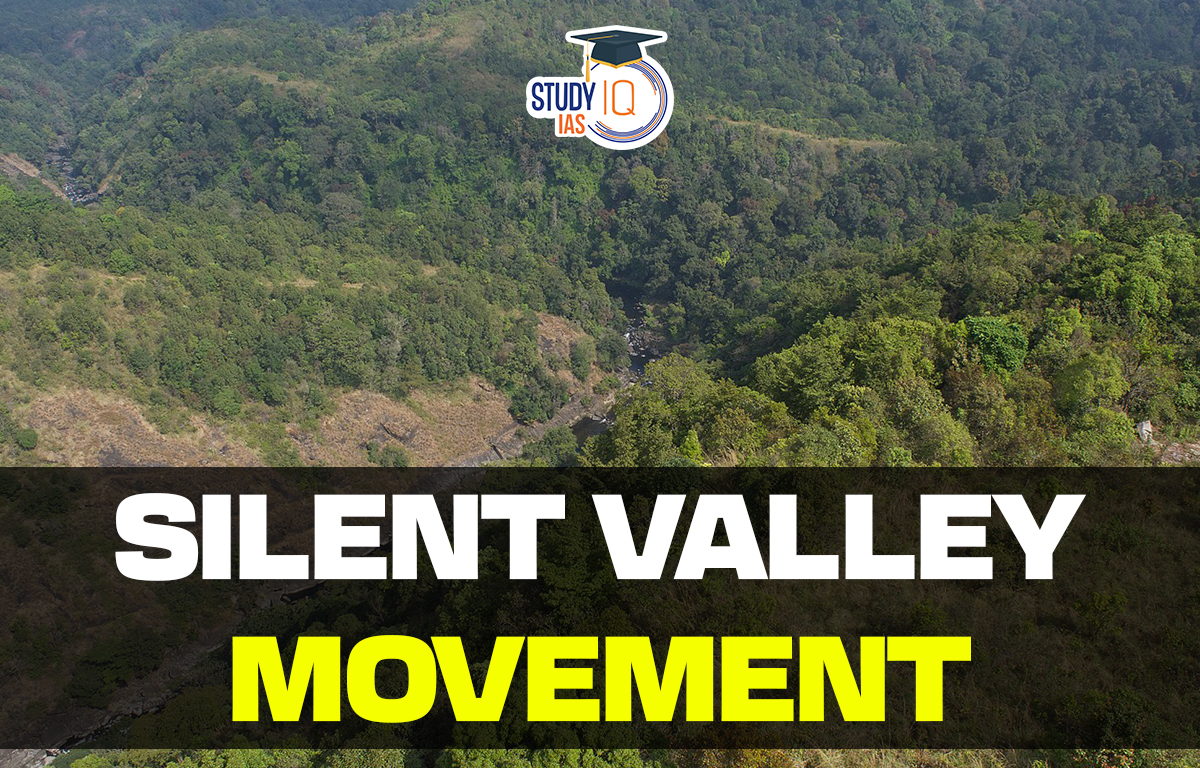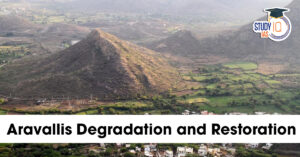Table of Contents
The Silent Valley Movement was a pioneering environmental and social movement in India, focusing mainly on saving the Silent Valley, an evergreen tropical rainforest in Kerala’s Palakkad district, from being inundated by a planned hydroelectric project. It was one of India’s first and most important environmental campaigns, which succeeded in saving an extraordinary hotspot of biodiversity.
Silent Valley Movement
Silent Valley Movement was a significant environmental campaign in India during the late 1970s and early 1980s. It was aimed at protecting the Silent Valley, an ecologically rich and pristine tropical rainforest located in the Palakkad district of Kerala, from the proposed construction of a hydroelectric project. This movement is regarded as a milestone in India’s environmental conservation efforts and has set a precedent for similar struggles across the country.
To prevent a hydroelectric project from flooding the Silent Valley Reserve Forest and endangering its ecology, a campaign was established in 1973. It is a crucial part of the UPSC Syllabus. The UPSC Mock Test can help candidates prepare for the exam with more precision.
Background of Silent Valley Movement
The Silent Valley movement was a well-known social and environmental campaign that began in the 1970s to oppose a proposed hydroelectric project in Kerala, India’s Silent Valley region. Environmentalists, scientists, and locals who were concerned about the loss of the area’s unique ecosystem and the displacement of indigenous communities were primarily in charge of the movement.
- Silent Valley is part of the Western Ghats, a UNESCO World Heritage Site known for its unique biodiversity and endemic species.
- In 1973, the Kerala State Electricity Board (KSEB) proposed constructing a hydroelectric dam across the Kunthipuzha River, which flows through the Silent Valley forest.
- The project aimed to generate power for Kerala but posed a severe threat to the forest’s ecosystem, including the habitat of the endangered Lion-tailed macaque, a species found only in this region.
About Silent Valley Movement
The rare animal and bird species found in the Silent Valley are well-known. The name “Silent Valley” was given to this valley because it is densely forested and has a large area covered in vegetation; otherwise, aside from some birds and insects, there are no loud noises in the forest. The Silent Valley is traversed by the Kunthipura River. This drops from a height of 2400 metres over a distance of about 15 kilometres.
The dam over the top stream, according to British technicians, can help generate hydroelectricity. In 1973, the planning commission granted its blessing. The primary objective of the project was to generate 120 megawatts of electrical power and 240 megawatts of electrical power from water.
In 1976, a bunch of environmentalists started to oppose the Silent Valley proposal. Under the leadership of the World Wildlife Fund India’s vice president at the time, a task force was formed. The task force worked on the project for more than a year and carried out several surveys that suggested stopping it. According to the task force’s report, the construction of the project will seriously harm the green cover.
This report also advised that in case the government is compelled to build the dam, then they must also adhere to the 17 recommendations outlined in the given report. In 1979, the task force’s leader admitted that the original report was a blunder and made a plea to the government to cease the project completely.
Initiation and Timeline
- The concept of a hydroelectric scheme in Silent Valley goes back to 1928.
- The anti-dam movement picked up much steam in 1973.
- It was first backed by local communities and subsequently led by the Kerala Sasthra Sahithya Parishad (KSSP), a people’s science movement.
Resolution
- In 1980, then Prime Minister Indira Gandhi intervened, responding to the growing environmental concerns.
- The project was eventually cancelled in 1983 after further studies confirmed the potential ecological damage.
- In 1984, Silent Valley was declared a National Park, protecting it from future exploitation.
Also Read: Appiko Movement
Significance of Silent Valley Movement
- The Silent Valley Movement was instrumental in protecting this area of dense tropical forest, which was home to a wide variety of flora and wildlife.
- The campaign was successful in stopping the building of a hydroelectric dam that would have caused the flooding of significant portions of the forest, irreparable harm to the ecosystem, and eviction of the local tribal communities.
- The Silent Valley Movement brought focus to the ecological significance of the Silent Valley and the dangers presented by the proposed dam. It assisted in increasing a general understanding of environmental issues and the need to safeguard natural habitats.
- India’s environmental policies were significantly shaped by the success of the Silent Valley Movement.
- The National Committee for Environmental Planning and Coordination was established as a result, and its job was to examine and evaluate the environmental effects of potential development initiatives.
- The Environmental Protection Act of 1986, which established regulations for the avoidance of environmental pollution and the preservation of habitats, was also made possible by the movement.
- Similar campaigns to safeguard the environment and maintain natural habitats were inspired by the success of the Silent Valley Movement in India and other countries. It proved the effectiveness of grassroots action and the significance of citizen involvement in environmental protection.
Conservation Status of Silent Valley
The Silent Valley in Kerala, India, enjoys a high level of conservation protection due to its ecological significance.
- In 1984, Silent Valley was declared a National Park, ensuring strict protection under Indian law.
- It spans approximately 89.52 square kilometres and is part of the Nilgiri Biosphere Reserve in the Western Ghats, a UNESCO World Heritage Site.
- The surrounding regions act as buffer zones for added protection against human encroachment and activities that could threaten the park’s biodiversity.
- Silent Valley is recognised for its pristine tropical rainforest ecosystem and houses numerous endemic, rare, and endangered species of flora and fauna.
- Activities like deforestation, poaching, and large-scale projects (e.g., hydroelectric dams) are strictly prohibited within the park.
- Continuous monitoring and involvement of local communities and forest officials ensure the park’s protection.
- Local tribal communities, such as the Irula and Muduga, play an essential role in sustainable conservation efforts


 Aravallis Degradation and Restoration: I...
Aravallis Degradation and Restoration: I...
 Species Added to India's Flora and Fauna...
Species Added to India's Flora and Fauna...
 Salkhan Fossil Park Joins UNESCO’s Ten...
Salkhan Fossil Park Joins UNESCO’s Ten...





















